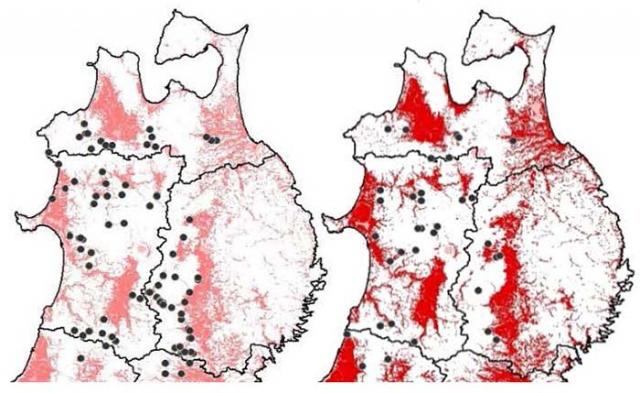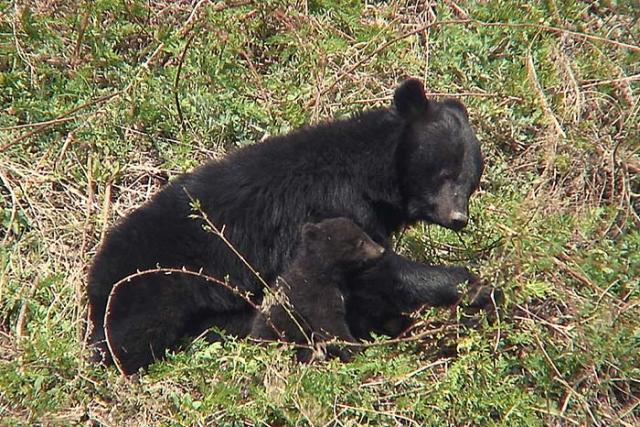Home > Research > Research Results > Research Results 2019 > Gene Analysis Reveals Asian Black Bears’ Avoidance of Rugged Lands and Farmlands
Update:August 20, 2019
Main content starts here.
Gene Analysis Reveals Asian Black Bears’ Avoidance of Rugged Lands and Farmlands
| Article title |
Landscape heterogeneity in landform and land use provides functional resistance to gene flow in continuous Asian black bear populations |
|---|---|
| Author (affiliation) |
Naoki Ohnishi (a), Takeshi Osawa (b), Toshiaki Yamamoto (c), Reina Uno (d) (a) Tohoku Research Center, FFPRI, Morioka, Iwate, Japan. (b) Graduate School of Urban Environmental Sciences, Tokyo Metropolitan University, Hachiouji, Tokyo, Japan. (c) Department of Veterinary Nursing and Technology, Nippon Veterinary and Life Science University, Musashino, Tokyo, Japan. (d) Institute for Advanced Biosciences, Keio University, Tsuruoka, Yamagata, Japan. |
| Publication Journal |
Ecology and Evolution, 9(8):4958-4968, Wiley, April 2019 DOI:10.1002/ece3.5102( External link ) |
| Content introduction |
The genetic differences among the populations of wild vertebrates have been studied in various species and numerous places. These studies have estimated the extent of genetic exchange between specific areas and the frequency of the entering-and-leaving activities of individuals in an area. Previous studies have shown that there are large genetic differences among the Asian black bear in both the isolated and continuous populations. In the present study, we aimed to identify the landscape features that induce such differences. We analyzed how the landform, especially altitude, may have effects on these differences and found that the altitude itself does not affect the habitats of the Asian black bear. However, the findings revealed that a large altitude difference and many undulations prevented genetic exchange. The result of analysis of land use further demonstrated that human land use, for example, residential areas and farmland, prevented genetic exchange. A comparison between the farmlands and the forests revealed that male and female bears showed five times resistance and a hundred times resistance to crossing the boundaries to enter farmlands, respectively, interfering with genetic exchange. It was also found that female bears show strong resistance to movement toward open bare lands and wetlands. Recently, it has been frequently reported that bears have invaded human habitation throughout the country. As a countermeasure for bears’ invasion, “Zoning Management,” which tries to draw boundaries between the human habitation areas and the habitats of other wild vertebrates, has been suggested. For example, introducing landscape features, which cause wild vertebrates to be reluctant to enter, may be an effective way to keep them away from human habitation areas.
Figure1. Maps of resistance to invasion caused by land use (left: male bears, right: female bears). Maps were drawn by modifying a figure in the article by Ogawa et al. (2013).
These colored maps show the level of resistance to invasion in other areas, that is, the extent of prevention of genetic exchange, based on human land use. The darker red areas in the maps show stronger resistance. The black circles in the maps are the places in which male and female bears, used for each sex-based analysis, were captured. As is shown in the maps, female bears show resistance to multiple types of human land use, being stronger than male bears.
Photo1. An Asian black bear cub with its mother (Photo by Yoshihiro Sato). |
Copyright © Forest Research and Management Organization. All rights reserved.


